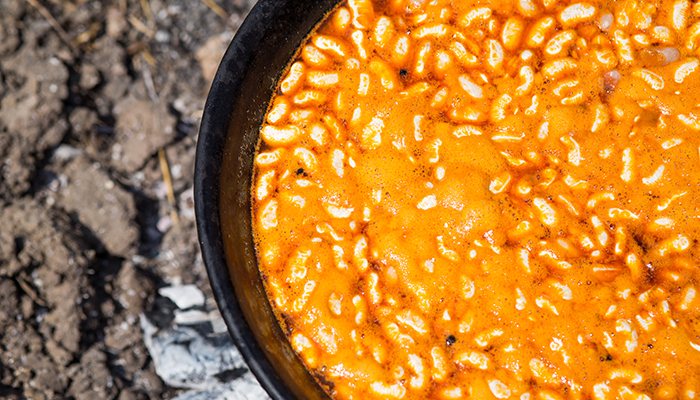
Some of you are already scoffing, because who doesn’t know how to cook beans, right. Well, many of you do, and then there are those that simply do not know. It is by no means complicated, but once away from the microwave, the pressure cooker, and the regulated and continuous temperatures of an electric or gas range, and clean tap water things change, and your methods must also change.
To Soak or Not To Soak
Some cooks will say always soak no matter what. Then others say while it may take slightly longer for the beans to cook if you don’t soak they find that soaking is a wasted step. Soaking your dried beans before cooking certainly doesn’t hurt and it can reduce the cooking time. Additionally, if you add salt to the water you are soaking the beans you further reduce the cooking time and add seasoning to the beans as well.
Water is a precious commodity, however, so soaking your beans, while camping or when off the grid, you can skip to conserve water. You certainly want to rinse your beans in particular if you had harvested them yourself. You need to remove dust, pollen, and other debris from the beans by rinsing well with clean water.
If you soak your beans, the water is typically discarded. You can, of course, use the same water, but you will have to contend with the debris in the water unless you rinsed well before soaking. If you do both, you are using up valuable water. Rinse and sort well using limited water and then straight into the pot.
Put your dried beans in the pot before you add water. Adding too much water is another waste of water and it may not allow the beans to thicken as much as you would like. It is easier to add water as needed throughout the cooking process. Once in the pot, add water until it is two inches over the top of the beans.
You don’t have to rapid boil your beans (see kidney beans later in the article) to get them soft. Simmering is ideal, and this reduces the risk of boiling your beans dry. If you have ever let beans boil dry, you know what a mess it is and then onto the compost heap they go.
Beans sometimes get shuffled to the bottom of the food chain. People stockpile them for emergencies, thinking they will have to rough it by eating beans and rice. If you cook your beans in a well-seasoned Dutch oven over a campfire, you won’t believe the flavor, and you may very well stop looking at them as just emergency rations.
Once you have the beans simmering, season with bay leaves, basil, salt, pepper, garlic gloves, and then you can add diced raw carrots, celery, and onions and any meat you want such as ham, salt pork, bacon, beef, or even chicken. If you do not want your vegetables to turn to mush, add them later in the process. Some even add a dash of cider vinegar for flavoring.
Beans are a basic staple that can be transformed into a main entree with a little creativity. You can add leftovers from yesterday’s meal to the beans such as corn, rice, or any vegetable or meat you have left over. Don’t want the same beans the next day. Turn them into baked beans then.
Add ketchup, or your favorite barbecue sauce. You can also add brown sugar or molasses, or even honey (yellow mustard optional), some white or cider vinegar, and a dash of Worchester sauce and let bake for a few hours to let some of the moisture evaporate.
Green peppers add a wonderful flavor to baked beans, so try it next time you make baked beans.
Beans can be a one-pot meal. They provide you with protein, fiber, vitamins, and iron and you can add your vegetables and meat to the same dish for a one-pot meal that provides all of your nutritional needs.
You will have to keep a close eye on the pot, and it is recommended you hang your Dutch oven over the fire using the bail handle versus setting the oven directly on the coals. Remember you want the beans to simmer, so no need for a rolling boil.
A Word about red Kidney Beans
Some of you may already know this, but as a reminder, red kidney beans should be boiled for 20 to 30 minutes before cooking in a pressure cooker or simmering in a Dutch oven. Red kidney beans have a high concentration of a toxic agent called Phytohaemagglutinin. Ingesting raw or undercooked kidney beans can cause illness, due to the toxin. The internal temperature must exceed 167° F (75° C), so simmering until you think they are done may not be enough, so boil first to be safe (FDA, 2015).
FDA. (2015). Retrieved 2016, from http://www.fda.gov/Food/FoodborneIllnessContaminants/CausesOfIllnessBadBugBook/ucm071092.htm